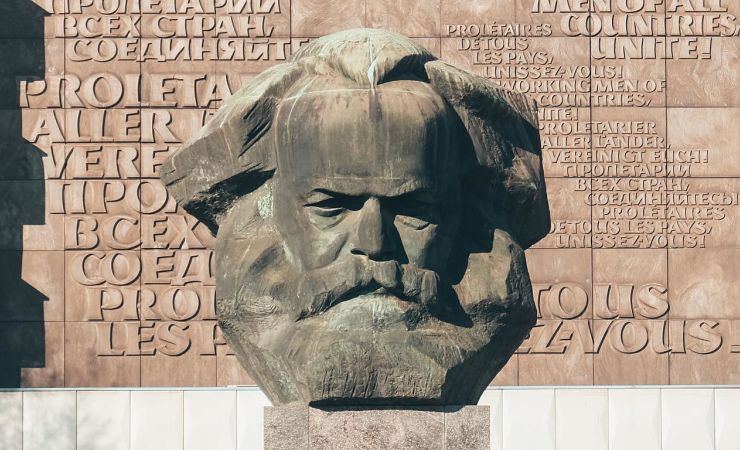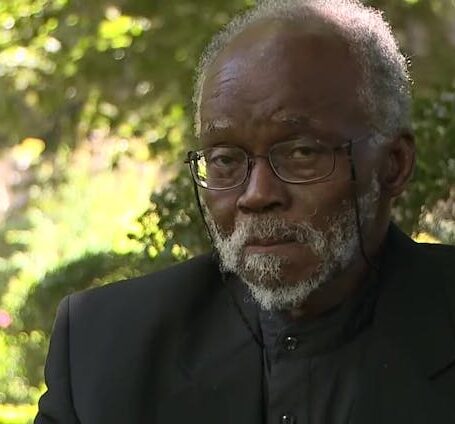Who Gets to Be Part of the Social Science Canon?
Since the LSE Impact of Social Sciences blog (where this originally appeared) is all about impact, let’s get to the point. How do you make a great impact on a discipline, its development and ultimately the way it engages with the wider world?
Short answer: you need to be recognized by your peers, for instance in citations. But not everyone is (or isn’t) cited for the same reasons, and not all recognition ultimately leads to the impact you aim for.
So, what strategy might you take to achieve this? Do you look to be recognized by your contemporary peers – become an academic influencer? Do you seek long term influence by becoming a canonized classic, the subject of future textbooks and undergraduate courses? Or, do you dare to want it all, controlling the discipline now and for decades and epochs to come? Made your choice? Good, but perhaps the best place to start understanding how you might influence the 21st century, is from examining the processes of recognition and social scientific canonization that shaped the past century.

The line of reasoning presented here is based on a quantitative study of the process of canonization in the German-speaking social-scientific discourse of the 20th century as represented by a population of almost 1,000 social scientists. To do this, I took a full survey of all scholars cited in the first universal handbook of German sociology (Handwörterbuch der Soziologie) from 1931. This sample was then compared to that of Dirk Kaesler’s Klassiker der Soziologie, a handbook outlining the contributions of select classic researchers in the field, which has played a significant role in demarcating the field and as a teaching aid from the 1970s to the present. By comparing the two it was possible to chart the trajectory of the would-be classics and the variables contributing to their eventual canonization.
Returning to the question of how one might shape your field, recognition in the form of citations, is a powerful tool in this process. Citation implies more visibility and further recognition; thus, it ultimately increases the status of a scholar and in so doing creates space for exclusion and inequality. In an extreme way, this can be seen in the allocation of the status of a ‘classic’ or member of the ‘canon’, such as the sociologists featured in the Klassiker der Soziologie. Classic authors and their works have a lasting impact on the development of a discipline, its identity, theories, and the vocabulary it uses to communicate. Hence, their creation has consequences for the future.
Spoiler alert: If you were in the 20th century and you happened to be a woman, you could just as well have stopped reading here.
The original field was already structured very unequally, with high rewards for the few scholars with powerful social positions and a small group of scholars without such social capital.
| POSITION | INDEX NAME | ADJUSTED PAGE REFERENCE |
|---|---|---|
| 1 | Weber, Max | 40 |
| 2 | Marx, Karl | 27 |
| 3 | Tönnies, Ferdinand * + | 25 |
| 4 | Simmel, Georg | 23 |
| 5 | Scheler, Max | 19 |
| 6 | Oppenheimer, Franz * + | 18 |
| 7 | Sombart, Werner * + | 17 |
| Spencer, George Herbert | 17 | |
| 9 | Wiese, Leopold von * + | 16 |
| 10 | Wundt, Wilhelm | 15 |
| 11 | Vierkandt, Alfred * + | 14 |
| Michels, Robert + | 14 | |
| Plenge, Johann | 14 | |
| Hegel, Georg W.F. | 14 | |
| Schmidt, Wilhelm | 14 | |
| 16 | Troelsch, Ernst | 13 |
| 17 | Engels, Friedrich W. | 12 |
| 18 | Comte, Auguste | 11 |
| 19 | Steinmetz, Sebald R. + | 10 |
| 20 | Kant, Immanuel | 10 |
| Durkheim Émile | 10 | |
| Schäffle, Albert | 10 | |
| McDougall, William | 10 |
This would lead to the canonization of very few scholars in a winner-takes-all fashion and to the forgetting of the rest of nearly the entire field. Strikingly, already from 1931 one can estimate who is likely to be canonized later in the century: Male scholars with a high amount of recognition. However, through comparison with the Klassiker der Soziologie, it becomes clear that those who would achieve lasting success generally held few social positions.
As you can see, women were largely excluded. You may think this is to be expected, since there were few women researchers at the time, but you would be mistaken. Three percent of the cited sociologists were women, and (surprisingly) they were recognized by their male peers.
| POSITION | NAME | NO. OF PAGES |
|---|---|---|
| 1 | Walther, Gerda | 4 |
| 2 | Bäumer, Gertrud | 2 |
| Bigg, Ada Heather | 2 | |
| Bühler, Charlotte | 2 | |
| Hetzer, Hildegard | 2 | |
| Huber, Theodora | 2 | |
| Meuter, Hanna | 2 | |
| Sanger, Margaret | 2 | |
| Stein, Edith | 2 | |
| Wolffheim, Nelly | 2 | |
| 3 | Arendt, Hannah | 1 |
| Bauer-Mengelberg, Käthe | 1 | |
| Besant, Annie | 1 | |
| Corte, Erna | 1 | |
| Davids (Foley Rhys), Caroline | 1 | |
| Elderton, Ethel Mary | 1 | |
| Evans, Mary | 1 | |
| Fürth, Henriette | 1 | |
| Heimpel-Michel, Elisabeth | 1 | |
| Herrmann, Gertrud | 1 | |
| Hirschberg-Neumeyer, Margherita | 1 | |
| Hosp-Wallner, Hedwig | 1 | |
| Lütkens, Charlotte | 1 | |
| Luxemburg, Rosa | 1 | |
| Märten, Lu | 1 | |
| Nebelung, Hilde | 1 | |
| Richter, Elise | 1 | |
| Spindler, Lore | 1 | |
| Stern, Clara | 1 | |
| Stopes, Marie Carmichael | 1 | |
| Tudor-Hart, Beatrix | 1 | |
| Vaerting, Mathilde | 1 | |
| Vecerka, Lucia | 1 | |
| Weber, Marianne | 1 | |
| Weiser-Aall, Lily | 1 |
Given the historical context with for instance less than one percent female professorships in 1931, 3 percent is significant. The distribution of recognition that I found in the Handwörterbuch citation data however, with all women at the bottom of the field and not one in the top 50 cited scholars, is statistically highly unlikely without the presence of bias.
Particularly remarkable is the fact that not only women received little recognition, but also the overwhelming majority of men. There was no significant difference between 99 percent of the male scholars and their female counterparts (compared to the one percent of the male elite). This indicates how factors alongside gender play a role in the allocation of recognition. For example, having several socially powerful positions, such as being one of the editors of the handbook and a board member of the German Sociological Association. A high amount of social capital, equaled a nine-fold increase in recognition compared to average scholars in the studied historical context.
This lays bare an open secret in the process of scientific appreciation, that there were and at times still are certain, often unclear or hidden, and notably unreasonable criteria for short-term recognition, linked to different resources (cultural, social or even economic capital). Put bluntly, you can get recognition because of your scientific work and, hence cultural capital, or you can get it because of your social skills, hence, social capital.
For an aspiring scholar this suggests two different ideal-typical strategies.
- Your first option is to use your cultural capital wisely: be creative, innovative, seminal in terms of the production of scientific knowledge. Know your sociology well and publish in a way that makes it impossible for others to ignore your work. To follow this strategy, in an ideal world, there is no need to depend on social capital, because your work speaks for itself and will be recognized. Unfortunately, I cannot tell you how and, alas, it is not an ideal world. For quantitative analysis, this remains a mystery, which we will return to below.
- Your second option is the opposite: become a fisher of men, collect as much social capital as possible, do the networking, become an influencer, hold positions in academic associations. For instance, become a member of a board, or an editor, and, thus, own the power to control a subfield, or even the entire discipline with your peers through social control over topic setting, conferences, academic positions, etc. Of course, it is easier to follow this strategy if you are able to also showcase disciplinary knowledge and skills in the form of publications as a bait for recognition. As a scientist, you may not have to be as outstanding as in the first strategy, but you will still be generously rewarded by your peers.

Reality as always is more complex, with different forms of capital developing to different extents over the course of a career. Interestingly, both strategies can be nearly equally successful in terms of recognition, understood via citations, and impact, in their own time. However, and here´s the bad news for those who bet on the social strategy aiming to become immortal, as a rule of thumb, you won’t become a classic. While both strategies may be able to get you a very high amount of recognition for a time, social power does not seem to pay off in the long term. On the contrary, social power seems to hinder your chances of becoming a classic. To become a classic requires the difficult path of scientifically standing out of the ordinary.
It has been long established that the recognition we grant as a scientific community has great influence. The problem remains that we still know very little about the concrete criteria that we apply on a daily basis to decide which works we consider to be scientifically outstanding. In the 20th century, one of the first requirements obviously was “being a male author”, but there were other factors at play. What does this mean for 21st century scholars? The most important question seems to be, how can we manage whom we allow to make an impact on the fate of the discipline and for what reasons? Linked to this is the need for a more mindful politics of citation. In practice, this might mean the next time you cite a scholar, think twice if you really know why their work is or should be considered important and for what reasons you grant recognition. More provocatively, the example of the 20th century might even lead us to question the equation – high recognition equals high quality – how might we canonize classics then?































































































